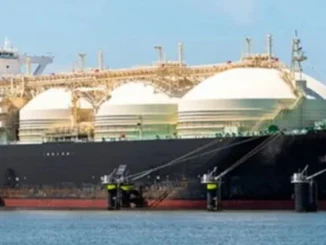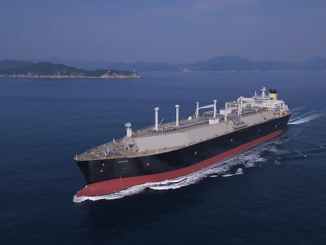
US LPG cargoes loading in June for delivery to Asia in July are estimated at 2.9 million mt, up from 2.4 million mt loading in April, while July-loading cargoes for August arrival are projected around 2.7 million as regional price strength supported by Chinese petrochemical-sector demand opens Western arbitrage, trade and shipping sources said.
The US cargoes together with healthy Middle Eastern flows are keeping Asia well supplied, helping the LPG freight market recover from a recent downtrend, sources said.
US shipments for June and July loadings each comprise 30% of butane and the rest propane, according to sources.
The higher shipments are “more likely to be due to more PDH [propane dehydrogenation] plants opening and more cracking demand”, a Chinese trade said.
China’s 17 propane dehydrogenation plants operated at an average 75% capacity in May with the startup of the newly built Shandong Xintai Petrochemical facility, S&P Global Commodity Insights calculations based on data from domestic information provider JLC showed.
The 17 plants have a combined propylene production capacity of 10.87 million mt/year, requiring up to 13.04 million mt/year of propane feedstock at full capacity.
Xintai Petrochemical in eastern Shandong province operated its new 300,000 mt/year PDH plant from May 25 at about 19% capacity in May, according to JLC.
A strong rebound in butane imports propelled China’s LPG intake 7.1% on the month to 2.12 million mt in May, General Administration of Customs data showed. China imported 532,531 mt of butane in May, up almost 56% on the month, though its propane imports fell 3.1% on the month to 1.58 million mt.
Higher butane imports are “partly due to seasonality and good margins for MTBE as well”, a second Chinese source said, adding that demand from petrochemical plants for butane, used in blending materials, such as methyl tertiary butyl ether, or MTBE, which has seen higher value this year, “will continue”.
China also gets evenly split LPG from the Middle East, with Iranian cargoes helping meet butane demand, other than the one-third butane loadings in US shipments.
Iran exported 859,000 mt of mixed LPG for May loading, the highest monthly volume since sanctions were imposed in 2014 and 2018.
June-loading shipments more than halved to 386,000 mt, but the monthly average for first-half 2022 was around 520,533 mt.
VLGC rates hit bottom
With improved demand for very large gas carriers loading US cargoes competing for activity in the Middle East, where Indian charterers are seeking vessels to lift term supply, any excess tonnage has been snapped up, lifting the Middle East-Japan freight to near $77/mt June 24, from a six-week low of about $67/mt June 21, shipbrokers said.
“The Arabian Gulf is firmer because Indian tenders (are) seen at moment and some vessels (are) running late,” a shipbroking source said. “Also, both US and the AG have requirements and the US is not getting that many July cancellations (of cargo loadings).”
Another shipbroker said vessel-demand recovery should help Baltic rates, as tighter dates would attract some premium on freight.
But the recent jump in bunker fuel prices is not expected to accelerate a freight rebound, said a third shipbroker.
IMO-compliant marine fuel’s premium delivered to Singapore jumped to an all-time high June 22 on tight supply of finished bunker grade material, especially for prompt delivery. Singapore-delivered marine fuel 0.5%S bunker premium to the benchmark Singapore marine fuel 0.5% cargo rose $10.84/mt day on day to $108.58/mt, the highest since the assessment was launched July 1, 2019, S&P Global data showed.
“Of course, owners or anyone with a vessel would want to try and obtain higher rates because of high bunkers, but in theory, it’s not that easy,” said the broker. “However, should the market fall, the floor should be higher with high bunker prices, as owners will not sail or take the risk of loading cargoes should the daily return hit about $10,000/day over a longer period.”
The broker said there is ample LPG supply from all regions, therefore more need for shipping. With the arbitrage improving ex-US/East, it also helps the shipping market, hence rates are moving higher.
“The Middle East Gulf market seems to have much more cargoes to sell, or lift themselves (suppliers) these past months, which really helps support the shipping market,” the broker said. “July-August are usually the months where we have seen historically a slow LPG market, so it could be a slow moving of rates, but I believe the fourth-quarter market will be very active and shipping more bullish than bearish.”
Source: Spglobal.com



